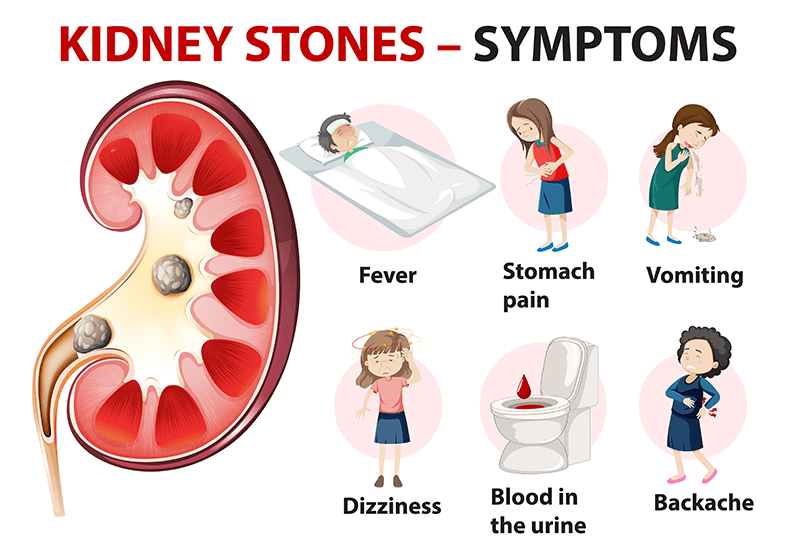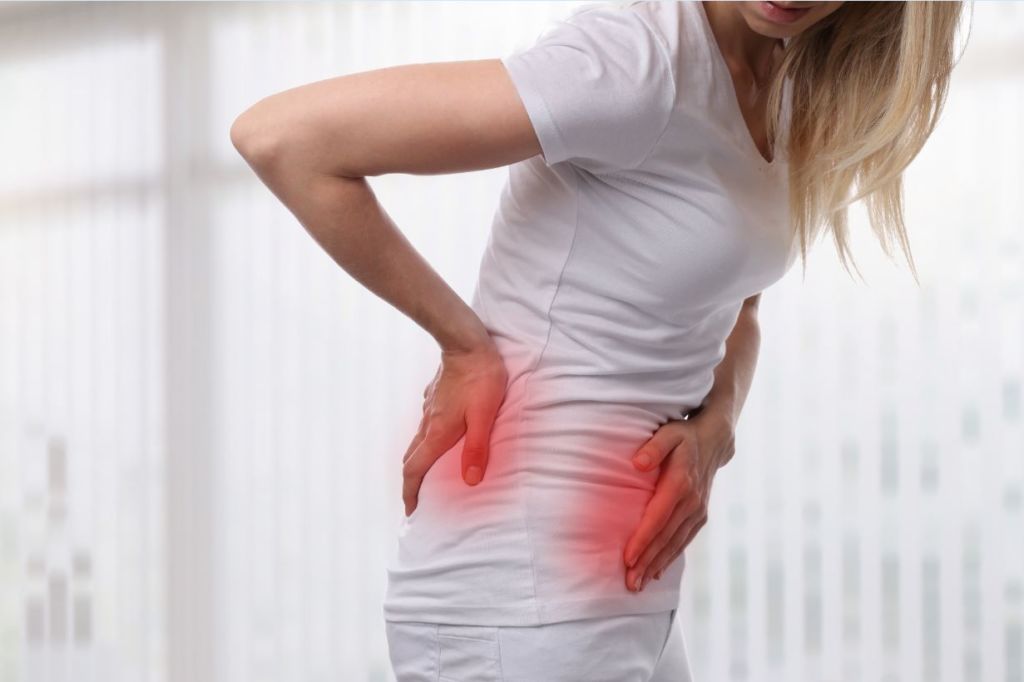KIDNEY STONES
Yes, kidney stone pain, the kind of pain that reduced big men into tears, the kind of pain that made its victims want to jump out of their skin. But what are kidney stones anyway? And why do they hurt that much?
Kidney stones, also known as renal calculi, are a kind of crystal concretion that usually originates within the kidneys; however, they can grow anywhere throughout your urinary tract, which includes:
- Kidney
- Ureters
- Bladder
- Urethra
Don’t get too excited because they’re not the kind of crystals that you’ll like. Instead, they’re a growing urological health problem that affects around 12% of the world’s population. They are considered the most common disease of the urinary tract and one of the most painful medical conditions out there.
WHAT CAUSES THE FORMATION OF KIDNEY STONES?
The etiology of kidney stones, also known as biomineralization, is a complicated biochemical mechanism that is yet unknown. Their development is a biological process involving physicochemical changes and urine supersaturation. A supersaturated solution is when a dissolved material exceeds the solvent’s ability to dissolve it under normal conditions. As a result, crystal concretions are formed.
- Kidney stone inhibitors: Inhibitors are chemicals that slow down the initiation of supersaturation, nucleation, crystal development, aggregation rate, and other stone forming processes. Urine normally includes substances that inhibit the development of crystals.
However, these inhibitors do not appear to function equally well for everyone; therefore, some people get stones. Inhibitors may act directly by interacting with the crystal or indirectly by affecting the urine environment. - Kidney stone promoters: Promoters are chemicals that aid in the creation of stones through various mechanisms. Stone development is thought to be caused by an imbalance between urinary stone inhibitors and promoters in general.

RECOGNIZING THE SYMPTOMS:
Although the location of the stone is related to the symptoms, the most common ones consist of:
- renal colic (intense cramping pain)
- flank pain (pain in the backside)
- hematuria (bloody urine: red, pink, or brown)
- obstructive uropathy (urinary tract disease)
- urinary tract infections
- blockage of urine flow
- hydronephrosis (dilation of the kidney)
These symptoms may be accompanied by nausea and vomiting, resulting from the intense pain of the stone incident. Keep in mind that initially, the stone formation does not produce any symptoms; in addition, in the case of (a) small kidney stone(s), you might not feel any pain or symptoms as the stone passes through the urinary tract.
TESTING AND DIAGNOSING
- Blood tests for calcium, phosphorus, uric acid, and electrolytes
- Blood urea nitrogen (BUN) and creatinine to measure kidney function
- Urinalysis to check for crystals, bacteria, blood, and white cells
- Examination of stones after they have passed to determine their type
- Abdominal X-rays
- Intravenous pyelogram (IVP)
- Retrograde pyelogram
- Ultrasound of the kidney, which is the preferred test
- MRI scan of the abdomen and kidneys
- Abdominal CT scan
Watch out for the contrast dye used in CT scans and the IVP, they can affect kidney function. But, this isn’t a problem for those who have normal renal function. Some medications, when used together with the dye, might raise the risk of renal injury. Make sure your radiologist is aware of any drugs you’re currently taking.
TYPES OF KIDNEY STONES
Abnormalities determine the chemical composition of kidney stones in urine chemical composition. They differ in size, shape, and chemical compositions, and accordingly, are classified into five types, which are named after their main constituents:
1. Calcium stones (Calcium Oxalate and Calcium Phosphate)
Calcium stones are the most common among all kidney stones, comprising 80% of them worldwide. They are narrow and plate-like, and when twined, they take on a dumb-bell form, as observed in urine sediments.
2. Struvite stones (Magnesium Ammonium Phosphate)
Struvite stones, also known as infection stones and triple phosphate stones, are seen in 10–15% of people who have kidney stones. It occurs in individuals with urease-producing chronic urinary tract infections. They can also grow to be quite big, obstructing the urinary tract. Women are more prone than males to develop this kind of stone.
3. Uric Acid stones (Urate)
This sort of stone makes up around 3–10% of all stone types. Purine-rich diets, particularly those including animal protein such as meat and fish, cause acidic urine that exacerbates the development of uric acid stones. In addition, gouty arthritis patients or those undergoing chemotherapy may develop kidney stones. Men are more likely than women to have this sort of kidney stone.
4. Cystine stones
Cystine stones comprise 2% of kidney stone types. It affects both men and women who suffer from Cystinuria, a genetic disorder. The Cystine type of stone is a naturally occurring acid in the body that escapes from the kidneys into the urine in this form of stone.
5. Drug-induced stones
This sort of stone makes up roughly 1% of all stone types, which makes it the rarest. It is caused by medications like guaifenesin, triamterene, atazanavir, and sulfa drugs. People who use the protease inhibitor indinavir sulfate, a medicine used to treat HIV infection, for example, are at risk of kidney stones.

HOW CAN YOU PREVENT IT?
The cause of kidney stone development must be addressed for effective stone avoidance. In general, proper diet management and the use of medicines are necessary to avoid the first episodes of kidney stone development or their subsequent episodes. As a result, dietary control is the most effective urolithiasis (the formation of stones) prevention approach.
- Say Yes! to water: Patients should be encouraged to increase their water consumption in order to maintain a urine output of at least 2 liters per day, regardless of the underlying etiology or drug intake for stone disease. In addition, drinking more water/liquids is a simple and crucial lifestyle modification that can help you avoid stone illness. Drinking enough water lowers urine saturation and dilutes promoters.
- Calcium is the way to go: Even though calcium is found in most kidney stones, consuming enough calcium in your diet can help prevent them from forming.
- A little less Sodium: A high sodium diet increases the risk of stone formation by decreasing renal tubular calcium reabsorption and increasing urine calcium.
- Fruits and vegetables instead of meat: Animal protein restriction is also recommended since animal proteins have a higher acid load due to their high sulfur-containing amino acid composition. As a result, if your urine is highly acidic, you may need to consume less meat, fish, and poultry, as well as avoid vitamin D-rich foods. Increased consumption of potassium-rich fruits and vegetables is suggested instead.
- Don’t go too heavy on Vitamin C: Vitamin C has been linked to stone formation because ascorbic acid is converted to oxalate in vivo. As a result, you might want to limit your vitamin C supplements.
IF IT HAPPENED, HOW CAN IT BE TREATED?
The treatment of kidney stones is generally tailored to the type of stone. The most natural remedy would be drinking a lot of water to increase the chances of the stone passing through the urinary tract. However, in the case of dehydration or severe nausea and vomiting, doctors resort to intravenous fluids.
Other treatment options include:
1. Medication (prescribed):
- Allopurinol (Zyloprim): to treat uric acid stones
- Thiazide diuretics: to prevent calcium stones
- Sodium bicarbonate/ sodium citrate: to make the urine less acidic
- Phosphorus solutions: to prevent calcium stones
- Ibuprofen (Advil): to relieve pain
- Acetaminophen (Tylenol): to relieve pain
- Naproxen sodium (Aleve): to relieve pain
- Antibiotics: to treat infection
2. Lithotripsy: Sound waves are used in extracorporeal shock wave lithotripsy to break up large stones so they can flow more easily through the ureters and into your bladder. This treatment can be unpleasant and may necessitate the use of a local anesthetic. It can result in bruising and bleeding in the abdomen, back, around the kidneys, and other surrounding organs.
3. Tunnel surgery (percutaneous nephrolithotomy): The stones are removed through a small incision in your back by a surgeon. This procedure may be required when:
- The stone is either obstructing the flow of urine and causing infection or is damaging the kidneys
- The stone has become too huge to pass
- The pain is unbearable
4. Ureteroscopy: If a stone is stuck in the ureter or bladder, your doctor may use a ureteroscope to remove it. A camera is attached to a tiny cable put into the urethra and passed into the bladder. The doctor then snags the stone and removes it with a small cage. The stone is subsequently sent to a lab for examination.
Urolithiasis is becoming more common across the world, despite significant advances in the development of novel treatments for kidney stones. Many elements of the development of this disorder are yet unknown. In this case, what can be done on your part is mainly preventative by finding a properly balanced diet
If you or anyone you know is suffering pain in your lower abdomen, please consult our specialists today. Call us on (469) 545-9983 to book an appointment.
